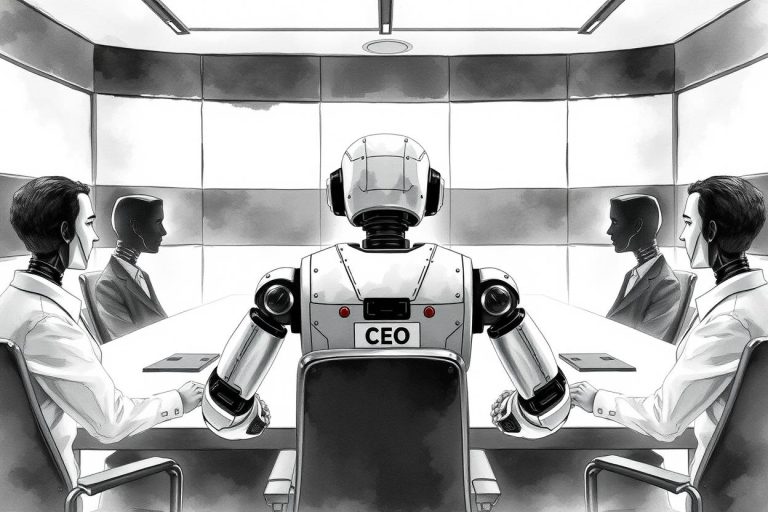Agentic Process Automation in 2025: Adoption, Trends, and Case Studies

An AI agent plans, coordinates, and executes multi‐step business tasks on its own. Deloitte defines these “autonomous generative AI agents” as software that “can complete complex tasks and meet objectives with little or no human supervision,” distinguishing them from today’s chatbots or copilots. In practice, agentic process automation promises much higher end‐to-end automation (fewer manual hand‐offs) than current “prompt‐driven” tools.
Global AI agent Adoption Trends and Statistics
Recent surveys and forecasts indicate that agentic AI is rapidly moving from pilots to early production, especially in large enterprises. Key findings regarding agentic AI applications and future trends shows:
- Corporate Surveys – A UiPath survey (Jan 2025) of 250+ U.S. IT executives found 90% identified existing business processes that could be improved by agentic AI, 37% were already using agentic agents, and 77% planned to invest this year. Likewise, 93% were “extremely or very interested” in exploring agents. Similarly, the LangChain 2024 report (1,300+ professionals globally) found 51% of respondents had AI agents running in production, and 78% had plans to deploy them soon. Notably, interest cuts across industries: 90% of non‐tech organizations have or plan agents (nearly equal to 89% of tech firms). In sum, enterprise readiness is high, though actual deployments vary.
- Industry & Company Data – A U.S. EY (Tech Pulse) poll (Apr 2025) of 500+ technology‐sector leaders found 48% are already adopting or fully deploying agentic AI. Half of these leaders also expect >50% of their AI deployments to be fully autonomous within two years.
- In the finance sector, a Wolters Kluwer survey (mid-2025) reports only 6% of finance organizations currently use agentic AI, but 38% plan to adopt within 12 months, reaching 44% by 2026 (a 6× increase). These numbers show tech firms and finance leaders are pioneering adoption, with others close behind.
- Analyst Forecasts – Independent analysts project rapid growth. Deloitte predicts that by 2025 about 25% of companies using generative AI will have launched agentic AI pilots or proofs of concept (rising to 50% by 2027). Gartner projects agentic AI will handle 15% of routine decisions by 2028 (up from virtually 0% now) and will be embedded in one-third of enterprise applications by 2028. IBM’s Institute for Business Value (June 2025) finds 86% of executives expect agentic AI to make process automation far more effective by 2027, and 76% are already running proof-of-concepts for autonomous workflows.
- Productivity & ROI Signals – Although rigorous ROI figures are scarce, early evidence is promising. One analysis highlights Klarna’s use of customer-service agents: issue resolution is now 5× faster and repeat inquiries are down 25%, with two-thirds of queries handled by agents (equivalent to 700 full-time staff), saving about $40M and cutting sales/marketing and service expenses ~15%. Another example: Amazon’s AI coding agents saved an estimated 4,500 developer-years of work (≈$260M) in routine software upgrades. These case examples (see below) illustrate the scale of gains possible when agents are successfully deployed.
The table below summarizes some representative adoption statistics:
| Organization/Group | Adoption Metric (2024–2025) | Source |
|---|---|---|
| U.S. tech companies (500 leaders) | 48% report adopting/fully deploying agentic AI; 50% say >50% of future AI will be autonomous. | EY (US Tech Pulse, Apr 2025) |
| U.S. large enterprises (IT execs) | 37% already using agentic AI; 77% planning investment this year; 90% see processes improvable; 93% very interested. | UiPath survey (Jan 2025) |
| Non-tech organizations (global) | ~90% have or plan AI agent deployments (2024) | LangChain State-of-Agents (2024) |
| Finance departments (global) | 6% using agentic AI now; 38% will adopt in 12 months; 44% will by 2026 (∼6× growth) | Wolters Kluwer CFO survey (May 2025) |
| All enterprises (global) | <1% of enterprise apps had agentic AI (2024), growing to 33% by 2028 | Gartner prediction (Oct 2024) |
| GenAI users (global) | 25% of companies using GenAI will launch agentic AI pilots in 2025 (50% by 2027) | Deloitte TMT Predictions (2024) |
These data show strong momentum: a large majority of companies are planning agentic projects, and sizable minorities have already moved beyond pilots. However, full-scale, integrated deployments remain limited (much like earlier AI efforts).
Analysts emphasize that industry-specific “vertical” agent applications – rather than horizontal tools – will drive real value, but are harder to scale. In fact, McKinsey notes that less than 10% of AI use cases ever exit pilot stage, often because complex workflow integration is difficult. This suggests that while interest is high, widespread adoption of fully autonomous agents is still emergent.
Industry and Regional Highlights

Adoption varies by industry but shows broad interest. Technology and finance lead the way, but many sectors are exploring agents:
- Technology & IT: As noted, nearly half of tech firms already use or plan agentic AI. IDC and analyst reports highlight AI agents for software development and IT operations. For example, Amazon’s use of coding agents (saving 4,500 developer-years) and Salesforce’s AI for customer support (handling 35–40% of chats at ~$1 each) come from this sector.
- Financial Services & Insurance: Agentic AI is seen as a tool for continuous risk assessment, compliance, underwriting and customer advisory. The Klarna (FinTech) case (below) and Palantir/Anthropic insurance example underscore finance use cases. Gartner likewise calls finance a domain “poised for a transformative era” of agentic AI.
- Healthcare: Demand is high (e.g. admin automation, diagnostics), but published adoption figures are scarce. Industry surveys (Bain, etc.) show strong interest in GenAI for healthcare, but concrete agentic-automation deployments in hospitals or pharma are still limited. (For example, one healthcare leader reported 40% cut in administrative tasks using agents, but detailed credible metrics are hard to find.) Concerns about data privacy (cited by 57% of health respondents in one survey and the need for clinical validation mean many projects remain proofs‐of‐concept.
- Manufacturing & Logistics: Companies are piloting intelligent agents for supply chain forecasting, predictive maintenance, and inventory management. For instance, John Deere’s subsidiary Blue River uses autonomous “See & Spray” robots (an AI agent) in agriculture to save chemicals. However, large‐scale published adoption stats in manufacturing are not yet available, and most reports emphasize pilots and feasibility studies.
- Other Sectors: Retailers, telecoms, energy, etc., are experimenting with agents for customer service and operations. Across sectors, surveys indicate that fear of falling behind is driving interest: e.g. 69% of surveyed executives say they adopt agentic AI “to stay competitive”. In sum, while headline figures focus on tech and finance, adoption planning is essentially global and multi-industry.
Case Studies: Real-World Results
Illustrative enterprise cases show the impact of agentic automation (below figures are from 2023–2025 deployments):
| Company / Organization | Industry | Agentic Use Case | Impact/Results | Source |
|---|---|---|---|---|
| Klarna (Swedish FinTech) | Online Payments | AI agents handle customer-service queries autonomously | Customer issues resolved 5× faster (vs. human agents); 25% fewer repeat inquiries. Agents handled ~2/3 of inquiries (≈700 FTEs of work) in 2024, saving ∼$40M. Sales & support costs fell by 15%. | ARK Invest, 2024 |
| Amazon (U.S. Tech) | E‑commerce/Cloud | AI coding agents for software upgrades | Saved 4,500 developer-years of work (≈$260M/year) on routine code tasks, accelerating upgrades and reducing costs | ARK Invest, 2024 |
| Major Insurance Co. (US) | Insurance/Analytics | 78 AI agents for underwriting processes via Palantir/Anthropic | Underwriting cycle time cut from 2 weeks to 3 hours. Enabled near-real-time risk decisions with minimal human oversight | ARK Invest, 2024 |
Each of the above involved deploying autonomous AI agents to replace or augment human‐run processes. In all cases, companies reported dramatic efficiency gains.
These examples are notable because they combine complex, multi-step processes with clear metrics. They also reflect a pattern: companies using agentic AI often report double-digit percentage improvements (5× speed-ups or >$ tens of millions saved) once an agent is tuned to the domain. However, it’s important to note that these are leading examples. Most enterprises are still piloting, and not all use cases will yield such scale of ROI.
Outlook and Considerations on Agentic Process Automation
By late 2025, agentic process automation is expected to move from isolated pilots toward scaled deployments in some sectors. Industry forecasts from Gartner suggest broad adoption is coming in the next 3–5 years. For now, companies report very high interest and are heavily investing in readiness (governance, data, talent). According to surveys, 70–84% of firms plan to hire or upskill staff for AI projects and security/governance of Agentic AI is a top concern as usage scales.
In summary, 2024–25 data show agentic automation is at an inflection point:
- Enterprise commitment is strong, especially in tech and finance, with dozens of high-profile pilots now live. Surveys find most leaders intend to embed agents soon.
- Real gains are emerging in early adopters (see case studies). Firms that automate end-to-end processes report substantial cost reductions and productivity boosts.
- Challenges remain: integrating agents into existing systems and ensuring reliability/governance are cited as critical hurdles. Gartner and others predict many projects will still fail to scale in the short term.
Overall, the trend is clear: agentic AI is rapidly moving from hype toward early adoption. By 2025, it will be a strategic priority in enterprises worldwide, though full-scale transformation will take several more years to materialize.
Sources: Recent industry research and surveys (2024–2025) from McKinsey, Deloitte, EY, IBM, Gartner, and others technology firms, universities and research companies.




